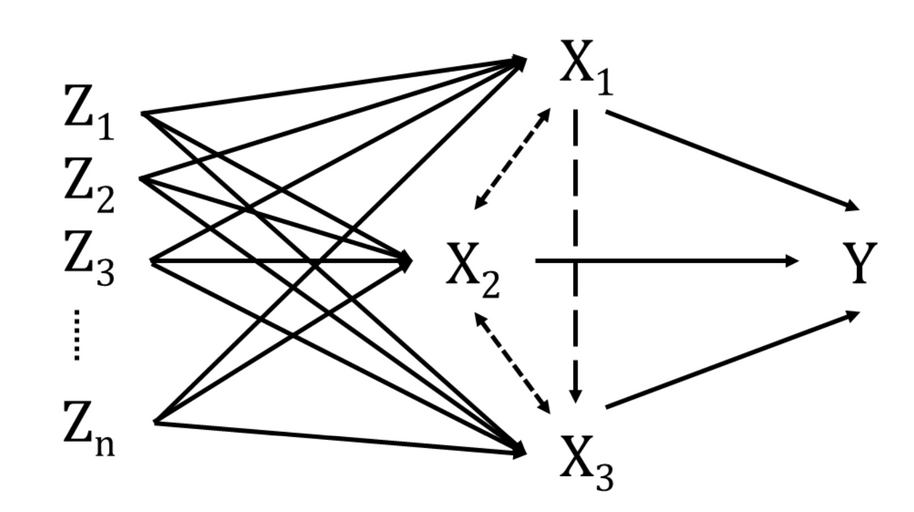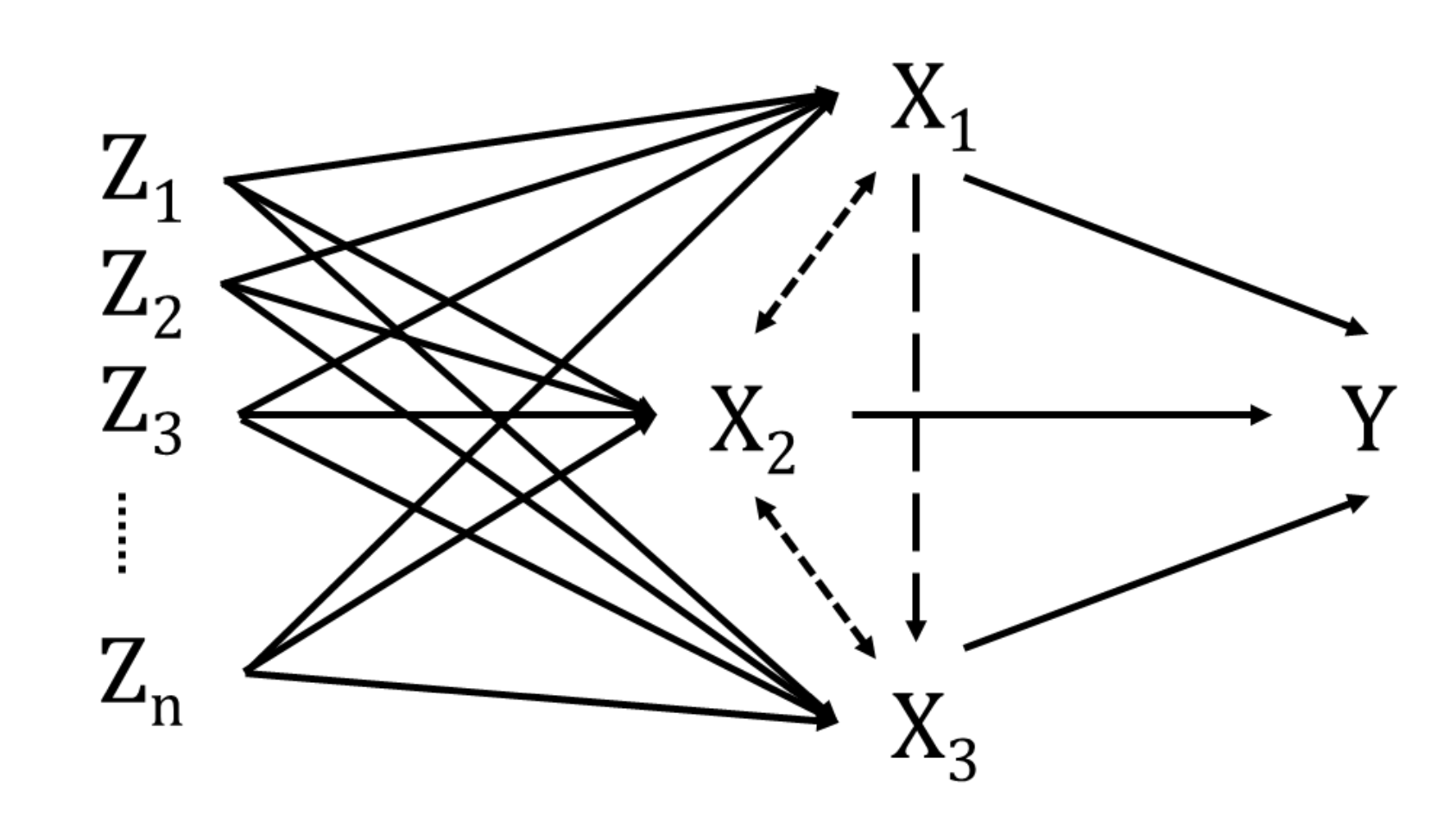MR analyses including multiple exposures in a single estimation. Multivariable MR can be used to estimate mediating effects of an independent variable, to adjust for possible pleiotropy bias due to horizontal pleiotropy of a specific effect, or to adjust for potential confounding. The estimate obtained from a multivariable MR analysis can be interpreted as the direct effect of an exposure of interest (adjusting for the other exposures included in the estimation) on the outcome.
All of the genetic IVs should fulfil the MR assumptions. In addition, each exposure should be strongly predicted by the set of genetic IVs conditional on the other exposures included. When using multivariable MR to adjust for confounding or horizontal pleiotropy, it is important to make sure that an exposure on the causal path between the primary exposure of interest and the outcome is not being adjusted for. In the context of mediation, multivarible MR can be coupled with univariable MR results and formally through two-step MR to estimate the total, direct and indirect effects of an exposure on an outcome of interest.

References
- Sanderson E, Davey Smith G, Windmeijer F, Bowden J. An examination of multivariable Mendelian randomization in the single-sample and two-sample summary data settings. International Journal of Epidemiology 2018; 48: 713–727.
- Burgess S, Thompson SG. Multivariable Mendelian randomization: the use of pleiotropic genetic variants to estimate causal effects. American journal of epidemiology 2015; 181: 251-60.
- Xu L, Borges MC, Hemani G, Lawlor DA. The role of glycaemic and lipid risk factors in mediating the effect of BMI on coronary heart disease: a two-step, two-sample Mendelian randomisation study. Diabetologia 2017; 60: 2210-2220.
Other terms in 'Definition of MR and study designs':
- Bidirectional MR
- Factorial MR
- Instrumental variable (IV)
- Mendelian randomization (MR)
- MR for drug targets
- MR with binary exposures
- One-sample MR or MR with individual-level data
- Two-sample MR or MR with summary-level data
- Two-step or Mediation MR

